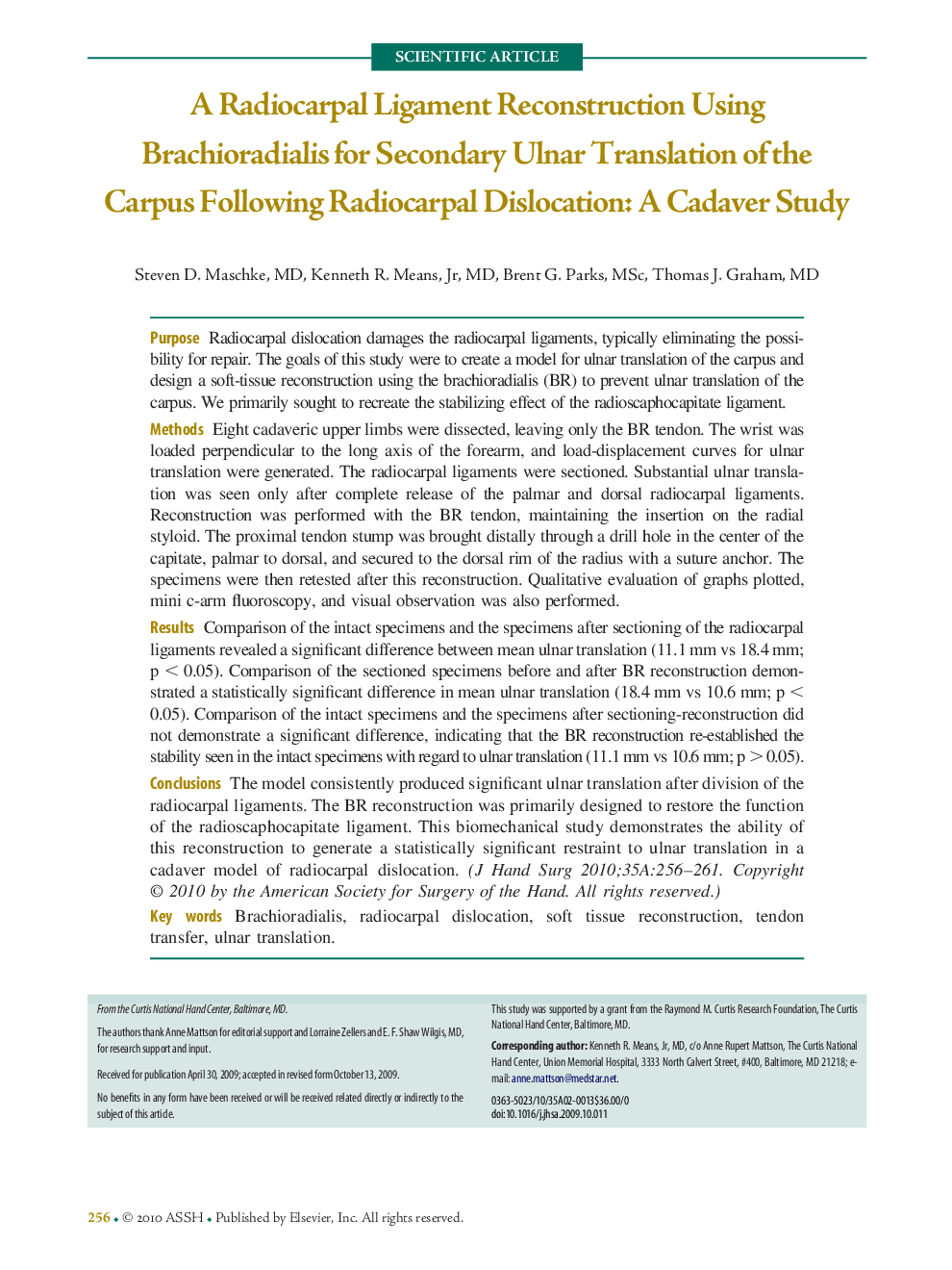| کد مقاله | کد نشریه | سال انتشار | مقاله انگلیسی | نسخه تمام متن |
|---|---|---|---|---|
| 4071252 | 1604425 | 2010 | 6 صفحه PDF | دانلود رایگان |

PurposeRadiocarpal dislocation damages the radiocarpal ligaments, typically eliminating the possibility for repair. The goals of this study were to create a model for ulnar translation of the carpus and design a soft-tissue reconstruction using the brachioradialis (BR) to prevent ulnar translation of the carpus. We primarily sought to recreate the stabilizing effect of the radioscaphocapitate ligament.MethodsEight cadaveric upper limbs were dissected, leaving only the BR tendon. The wrist was loaded perpendicular to the long axis of the forearm, and load-displacement curves for ulnar translation were generated. The radiocarpal ligaments were sectioned. Substantial ulnar translation was seen only after complete release of the palmar and dorsal radiocarpal ligaments. Reconstruction was performed with the BR tendon, maintaining the insertion on the radial styloid. The proximal tendon stump was brought distally through a drill hole in the center of the capitate, palmar to dorsal, and secured to the dorsal rim of the radius with a suture anchor. The specimens were then retested after this reconstruction. Qualitative evaluation of graphs plotted, mini c-arm fluoroscopy, and visual observation was also performed.ResultsComparison of the intact specimens and the specimens after sectioning of the radiocarpal ligaments revealed a significant difference between mean ulnar translation (11.1 mm vs 18.4 mm; p < 0.05). Comparison of the sectioned specimens before and after BR reconstruction demonstrated a statistically significant difference in mean ulnar translation (18.4 mm vs 10.6 mm; p < 0.05). Comparison of the intact specimens and the specimens after sectioning-reconstruction did not demonstrate a significant difference, indicating that the BR reconstruction re-established the stability seen in the intact specimens with regard to ulnar translation (11.1 mm vs 10.6 mm; p > 0.05).ConclusionsThe model consistently produced significant ulnar translation after division of the radiocarpal ligaments. The BR reconstruction was primarily designed to restore the function of the radioscaphocapitate ligament. This biomechanical study demonstrates the ability of this reconstruction to generate a statistically significant restraint to ulnar translation in a cadaver model of radiocarpal dislocation.
Journal: The Journal of Hand Surgery - Volume 35, Issue 2, February 2010, Pages 256–261